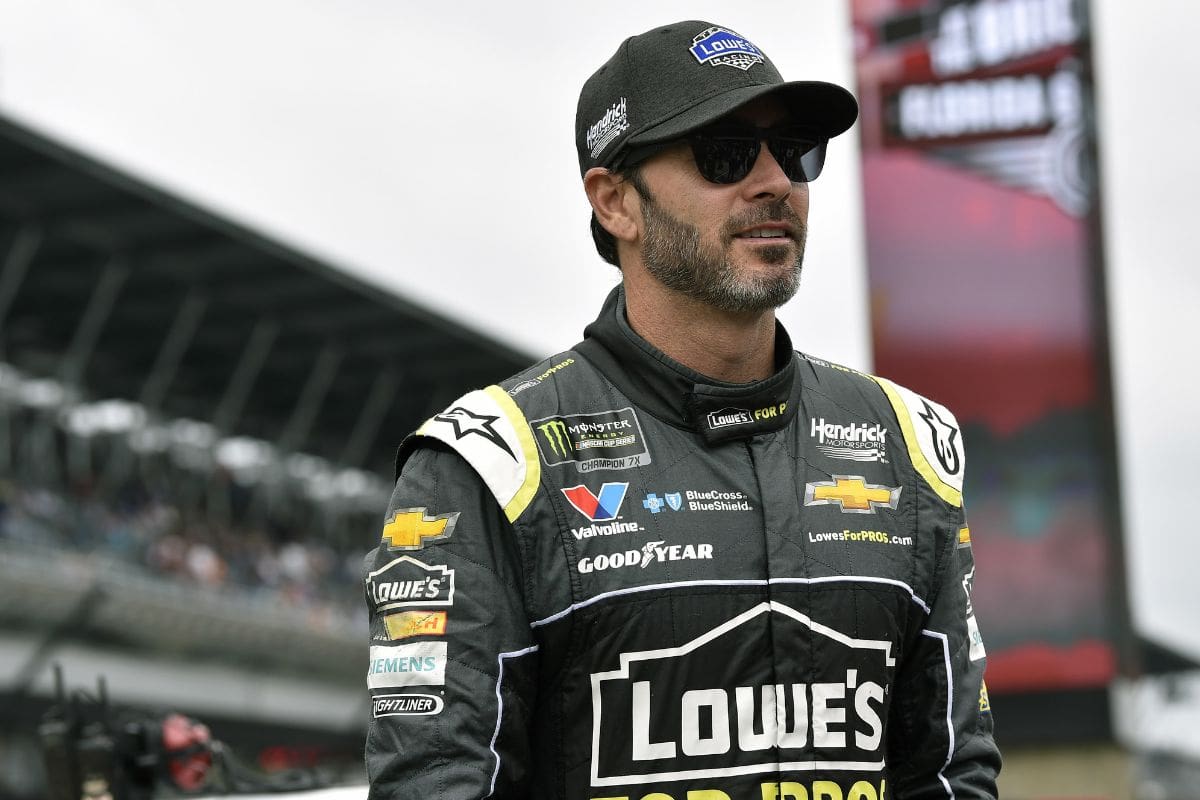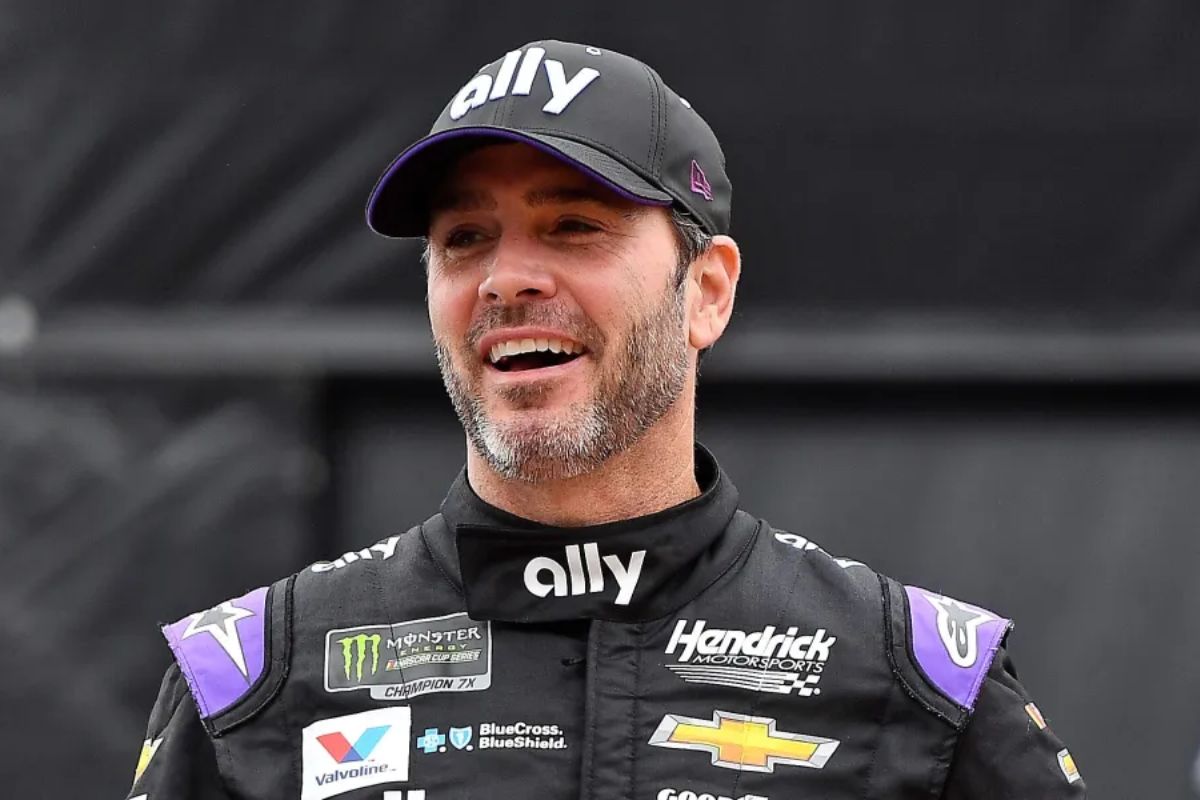Johnson’s Career Mirrors Jordan’s: Exploring the career course of Jimmie Johnson and Michael Jordan, as positioned in the recent article, reveals a fascinating study of resilience and adaptation across different professional sports. Johnson’s advancement into NASCAR’s Next Gen era mirrors Jordan’s brief baseball period, where both legends were struggling with unfamiliar challenges. This comparison highlights their commitment to excel outside their comfort zones. As Johnson continues to adjust and improve, one wonders whether his journey will ultimately strengthen or redefine the legacy.
Key Takeaways
- Johnson and Jordan faced challenges adapting to new competition environments late in their careers.
- Johnson’s determination to master the Next Gen car mirrors Jordan’s efforts in baseball.
- Criticism of Johnson’s performance reflects the difficulties Jordan faced during his baseball career.
- Johnson’s transition may redefine cross-sport transitions, similar to Jordan’s impact.
Jimmie Johnson’s Struggles in the Next Gen Era
In the Next Gen era of NASCAR, racer Jimmie Johnson has struggled with adapting to the altered vehicle dynamics, a challenge highlighted during his recent performance at the Texas Speedway. Unlike his younger counterparts, Johnson, a seasoned champion, found himself at a disadvantage as he navigated. The Next Gen car introduced to level the playing field; these changes fundamentally alter how the car responds on the racetrack, demanding a different driving approach.
Johnson’s struggle isn’t merely about re-learning a vehicle; it’s about unlearning decades of instincts and techniques that are now a problem. The Next Gen car’s symmetrical layout and independent rear suspension contrast sharply with the previous generation’s asymmetric body and solid rear axle. This shift requires a change of driving strategies, particularly in handling the car’s balance and tire wear over the course of a race. While younger drivers like Chase Elliott have been quick to adapt, having less deep rooted habits and perhaps a more versatile approach to learning.
Moreover, the enhanced aerodynamics and reduced horsepower of the Next Gen car mean that maintaining momentum and mastering it has become more vital than ever. For Johnson, this period of adjustment is marked by trial and error, as each race becomes a learning experience in understanding the details of the Next Gen car’s performance capabilities.

Challenges Faced by a NASCAR Legend
Jimmie Johnson’s return to Texas highlighted the challenges he faces as a NASCAR legend adapting to the evolved dynamics of the modern Cup car. The Next Gen car, introduced after Johnson’s prime, demands a different driving style shaped by its unique aerodynamics and updated technological framework. This significant shift creates challenges for Johnson, who spent decades mastering a now-outdated model of race car.
“So he takes the break, he goes and runs IndyCars. He kind of reminds me of Michael Jordan.”
“But this looks like this is gonna be a long road to hoe, so to speak.”-Wallace
The transformation in the vehicle’s design, particularly with the independent rear suspension and the shift towards a more symmetrical car body, has altered the racing strategy and vehicle handling. For Johnson, whose last win at the Texas track came in 2017 under different technical conditions, the adjustment is not just about relearning a track but almost relearning the sport itself.
View this post on Instagram
Criticism and Reflections on Johnson’s Performance
Criticism of Johnson’s performance has intensified, labeling his explanation as a mere excuse. The 2023 season, particularly marked by his performances in races such as the Coca-Cola 600 and Daytona, brings these criticisms into the light.
At the Coca-Cola 600, Johnson ended at 37th position following a lap 70 crash, a deviation from the expectations set by his amazing career. This incident, combined with a 28th-place finish at Daytona after being caught in a crash four laps down, compounds his problems.
These outcomes have not only highlighted Johnson’s struggles with the Next Gen car but also started a broader discussion about the adaptability and decline in performance of seasoned drivers in evolving technological landscapes. Critics argue that Johnson’s attributions to ‘bad luck’ or ‘unavoidable incidents’ reflect a deeper inability to contend with the Next Gen vehicle’s demands.
“He says, ‘I got no practice, this is really hard on me. There’s not much NASCAR practice right now.’ Listen, we can line the excuses up. But I’ll go with Kenny Schrader. He says, ‘Listen, it’s not how you run, it’s how you place the blame.’ ”-Wallace

Johnson’s Determination and Progress
Despite facing intense criticism, Johnson’s recent performances signal a significant shift as he begins to understand the Next Gen car. His journey mirrors that of Jordan’s who, while seasoned, faced new challenges that demand a change of skills and strategies. This evolution was seen during a recent event where Johnson completed all 276 laps in a double overtime race. This achievement not only marks his longest record in the current Cup car but also a key moment of adaptation and resilience.
“I would assume and hope that towards the end of my events, I’ll be much more competitive (and) understand this car.”-Wallace
Analyzing Johnson’s performance course, around the halfway mark demonstrated a remarkable shift in momentum. According to seasoned analyst Kenny Wallace, it was at this point that Johnson began to ‘get there’.
“But around 147 laps of 270, he started getting there. And then he got involved in another mess-up.”-Wallace

News in Brief: Johnson’s Career Mirrors Jordan’s
The parallels drawn between Jimmie Johnson and Michael Jordan highlight the challenges faced by athletes when moving to new environments. Johnson’s adaptation to the Next Gen NASCAR era, despite criticism, shows a resilience and capacity for evolution similar to Jordan’s foray into baseball. Johnson’s ongoing development signifies a admirable determination in overcoming obstacles.
Also Read: Jimmie Johnson’s LMC Expansion Sparks Concerns: Assessing the Risks
